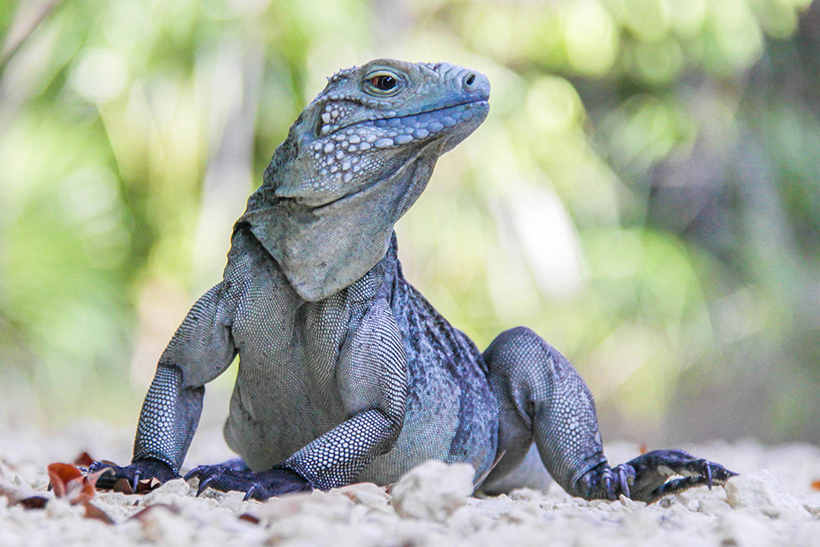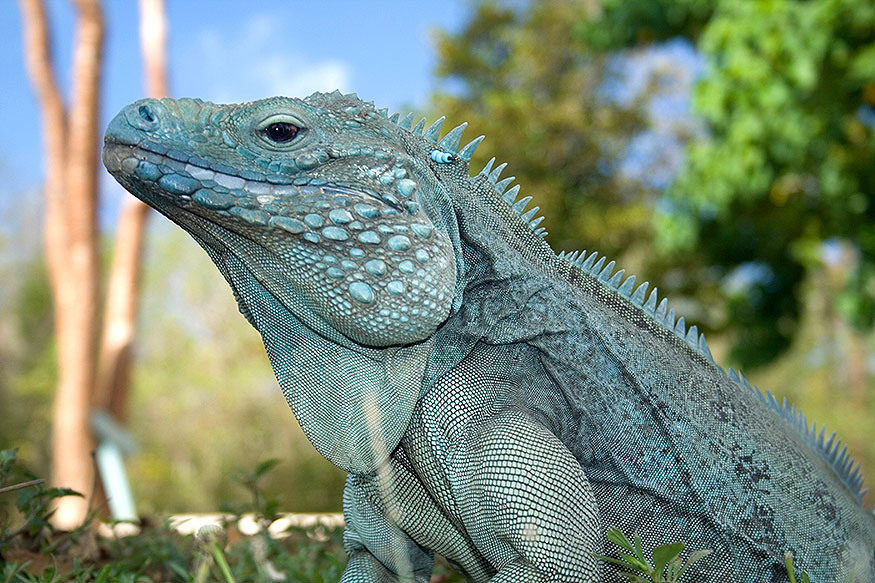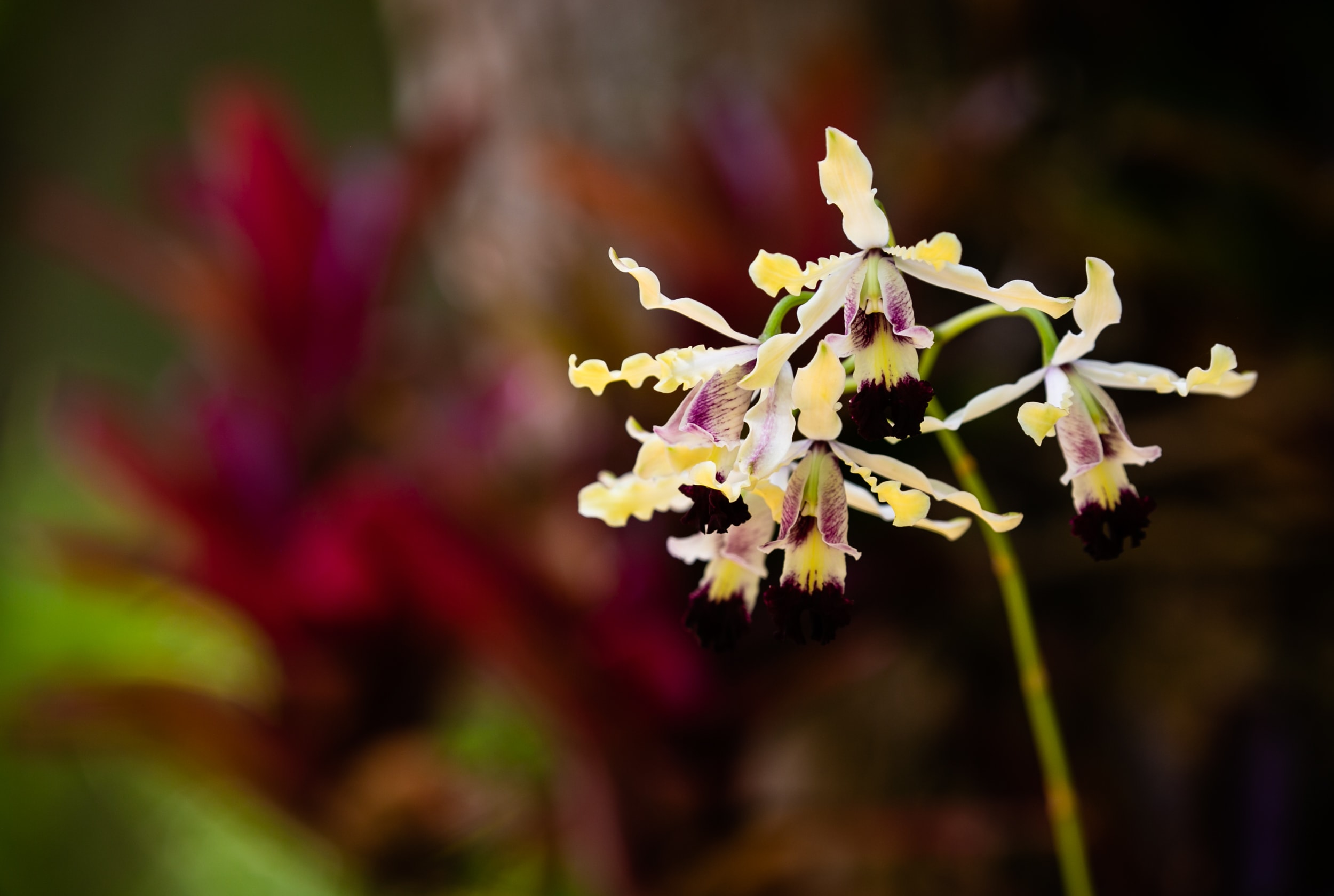
Land Purchase of Tropical Dry Forest in Cayman Islands Helps Save Blue Iguana
The Royal Society for the Protection of Birds (RSPB) has achieved a historic milestone by purchasing land in the Overseas Territories for the first time ever. Thanks to generous support from the Rainforest Trust, approximately 10 acres of biodiversity-rich tropical dry forest in the Cayman Islands has been saved from potential damaging development. The land will be leased in perpetuity to and protected by the RSPB’s in-territory partner, the National Trust for the Cayman Islands.
Saving Nature in the UKOTs is one of the RSPB’s priorities. The Caribbean region – internationally recognised as a ‘biodiversity hotspot’ – hosts five of the 14 UKOTs: Anguilla, the British Virgin Islands, the Cayman Islands, Montserrat and the Turks and Caicos Islands. The RSPB has an active programme in the Caribbean UKOTs to save globally-threatened species from extinction, protect the most important sites for nature and ensure its Caribbean partners – the principal partners being the National Trusts – are in a strong position to defend nature. The RSPC works with and supports the Trusts and Territory governments to build their capacity and to deliver good conservation outcomes.

Another important strand of the RSPB’s work in the Caribbean UKOTs is to strengthen environmental governance; the RSPB published an assessment which looked at how well sites and species were protected by legislation across the OTs, as well as how advanced development control procedures are in-territory. Weak or absent development control can – and sadly has – resulted in loss or conversion of habitats of high conservation value such as mangroves, dry forest and wetlands across the region, even in Key Biodiversity Areas. Land purchase is, therefore, an effective tool, until better development control measures are in place and enforced; provided it is appropriate, legally possible and approved of by or undertaken jointly with RSPB’s partners.
As such, RSPB has decided to undertake land acquisition in UK Overseas Territories where development controls remain inadequate.
RSPB has initially focused on the Cayman Islands because:
- It is an important habitat for biodiversity with very high levels of endemism and supporting several globally threatened species;
- A low proportion of this habitat is protected;
- Sites are under threat without effective legal or policy protection;
- The RSPB is already working in partnership with the excellent National Trust for the Cayman Islands (NTCI), who have an active land acquisition strategy; and
- The Cayman Islands has legislation that allows the RSPB to purchase land.

The National Trust has an ambitious target to bring 10% of Cayman’s land area under protection. Since 2014, the RSPB has been working with the Trust to find a site for joint focus. A parcel of land adjacent to the Trust’s Salina Reserve, a 647-acre Important Bird & Biodiversity Area (IBA) in eastern Grand Cayman, eventually came on the market at an opportune moment.
The Salina Reserve is home to the principal, remnant population of the Grand Cayman Blue Iguana, once widespread. Thanks to a concerted on-island effort led by the National Trust and the Department of Environment, this iguana has recovered from a source population of 10-12 individuals to over 1,000 individuals, approximately half of which are found in the Salina Reserve.
The new protected area provides a boost to the Trust’s Blue Iguana programme, which itself recently benefited from grants from the Disney Conservation Fund and Darwin Plus Initiative. The Blue Iguana programme breeds and head-starts individuals for release into the wild. It allows experts to research and monitor the species to ensure their long-term survival and population sustainability, whilst the head-start facility provides excellent opportunities to raise awareness of the plight of the iguana with locals and visitors.
This land will help buffer the reserve from development pressure and other threats, like road and residential construction. Unplanned, ill-considered development, sometimes carried out without legally required approval, destroys Grand Cayman Blue Iguana habitat and increases contact with non-native predators, such as feral cats, and competitors like the invasive Green Iguana. Because of the spatial nature of these threats, this new protected area provides a highly effective, much-needed and complementary conservation solution.

The Salina Reserve (Photo: Omari Rankine)
The island’s biodiverse dry forest habitat is home to many globally-threatened endemic trees such as the endangered Ironwood. Ironwoods are some of the island’s key forest canopy trees and a source of fruit for the iguanas. The reserve has several other unique botanical residents including the critically-endangered Grand Cayman False Foxglove (one of only two sites where this species is found) and the Corato and Silver Thatch Palm. A system of cave habitats for bats and other cave fauna also runs through the Salina Reserve.
The site is almost completely undisturbed by neighbouring human communities. This isolation, combined with the area’s habitat diversity, means the reserve safeguards a high proportion of Grand Cayman’s biodiversity. In future years, the new land will be a gateway to a larger-scale land acquisition within the Salina Reserve to further safeguard the island’s unique species. The National Trust will incorporate the new land into the reserve and manage it. The partners’ dedicated, combined efforts will help ensure conservation success for the Grand Cayman Blue Iguana and other endangered species that call the island home.
With the support of RSPB and National Trust members and the general public, the Trust and RSPB hope that this joint land purchase will be the start of an exciting new chapter for land conservation in the UK Overseas Territories.
This project was made possible thanks to co-funding from the Rainforest Trust and through gifts to the Conservation Action Fund and the SAVES Challenge.
BACK TO NEWS
